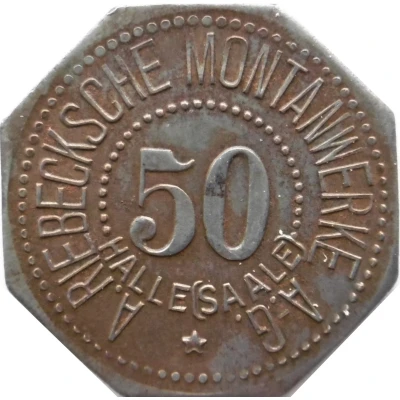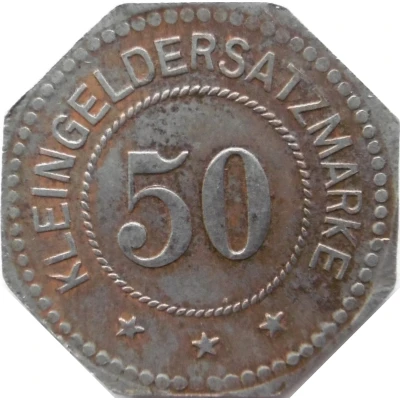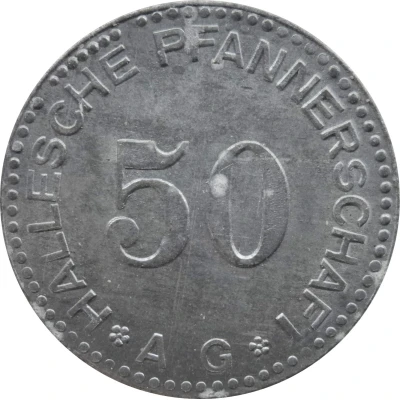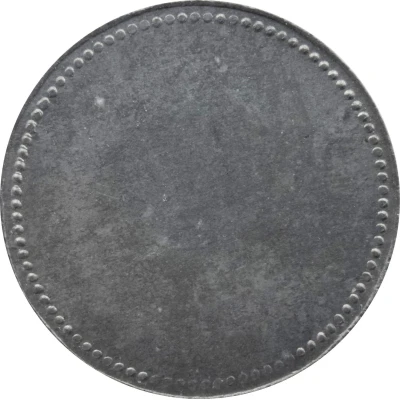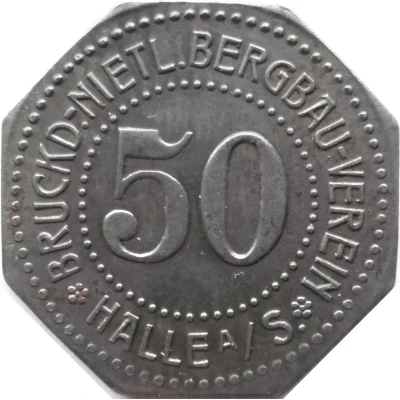
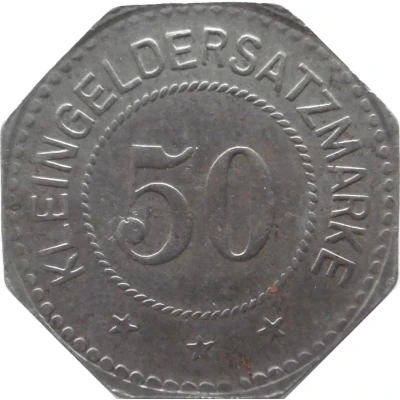

© Willem63 (CC BY-NC-SA)
50 Pfennigs - Halle (Bruckd.-Nietl. Bergbau Verein) ND
| Iron | 3.6 g | 24.3 mm |
| Issuer | City of Halle an der Saale (notgeld) (Prussian province of Saxony) |
|---|---|
| Type | Standard circulation coin |
| Value | 50 Pfennigs (50 Pfennige) (0.50) |
| Currency | Mark (1914-1924) |
| Composition | Iron |
| Weight | 3.6 g |
| Diameter | 24.3 mm |
| Thickness | 1.2 mm |
| Shape | Octagonal (8-sided) |
| Technique | Milled |
| Orientation | Medal alignment ↑↑ |
| Demonetized | Yes |
| Updated | 2024-10-04 |
| Numista | N#274184 |
|---|---|
| Rarity index | 95% |
Reverse
Pearl circle, legend surrounding with denomination centered.
Script: Latin
Lettering:
KLEINGELDERSATZMARKE
50
★★★
Edge
Plain
Comment
Fa: Braunkohlenindustrie(Menzel: BBB)
Interesting fact
One interesting fact about this coin is that it was issued during a time of economic turmoil in Germany, specifically during the hyperinflation period of the 1920s. The coin was made of iron, which was a cheaper alternative to traditional metals like copper or silver, and it had a relatively low denomination of 50 pfennigs, which was a fraction of the value of a standard German mark. This coin is a unique example of how cities and provinces in Germany adapted to the economic challenges of the time by issuing their own local currencies, known as "notgeld," to help facilitate trade and commerce.
